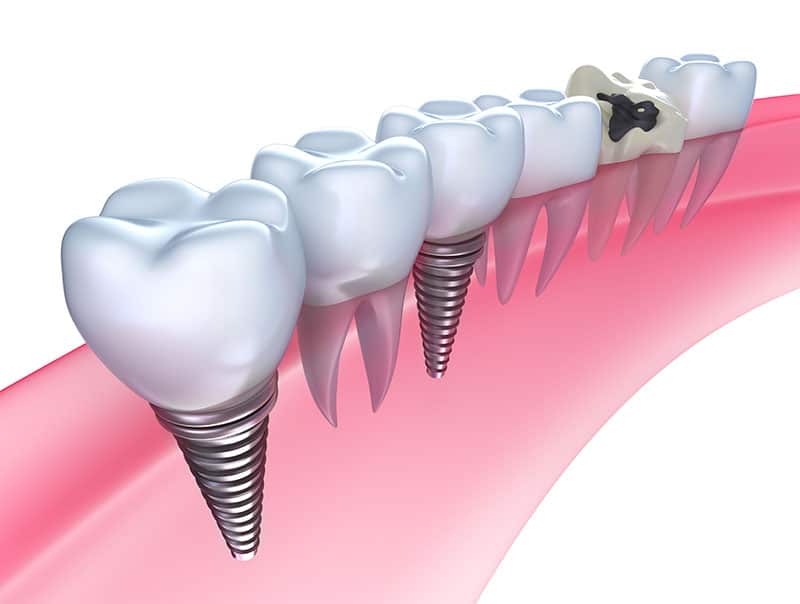Types Of Dental Implants

In today’s world oral care has been brought to a whole other level than it used to be. We know better how to treat oral diseases, thus improving the lives of both adults and children and of course – making their smiles shine as advertisers put it. But no I won’t be discussing just another trick to whiten your teeth, rather I shall try and give you important information about the different types of dental implants. So, if you are currently considering to get a dental implant, this article is the exact thing you need in order to pick the right type of implant and ultimately to know what dental implants are all about.
Getting a dental implant means having metal posts or frames being inserted into your jawbone by a dental surgeon. The idea behind that is to have a stable ground for artificial teeth – replacing the tooth root, and so, as you might expect, the whole process is very expensive. However, it might be of great importance for old people who have problems with speaking or / and eating after losing some of their teeth. And still, conventional bridges might be a better solution for some as they are less expensive and do not require the bone steadiness that the dental implants do. If you do choose dental implants, be sure to visit the dentist regularly and of course be committed to keeping the structures healthy in order to have the implants in the long-term.
There are only two types of dental implants acknowledged by The American Dental Association: endosteal and subperiosteal implants. The most common one used is the endosteal implant which is placed directly in the jawbone. Two surgeries are required to complete the whole process and after that an artificial tooth (or teeth connected to one another by a bridge) is put in place of the missing tooth or teeth (attached to the implant).
The second and more rarely used type of dental implant is the subperiosteal implant. That fancy word describes a metal frame which is put on or above the jawbone under the gum tissue. Typically, patients with a shallow jawbone are advised to get a subperiosteal implant, provided that they can’t or don’t want to undergo a rebuilding procedure.
The mentioned implants also differ in sizes and heights – standard and narrow (mini). To be able to pick the right type for you, you should consult with a dental implant expert who will help you get the one that works best for your case – namely, the tooth or teeth you need replaced.
To sum up, dental implants are recommended to people who want to have an artificial tooth or teeth placed and it serves as a tooth root. The different types of dental implants are used in different cases and the patient needs to be fully informed in order to pick the right solution for them. Most importantly, having any of those implanted means paying the dentist more regular visits.







